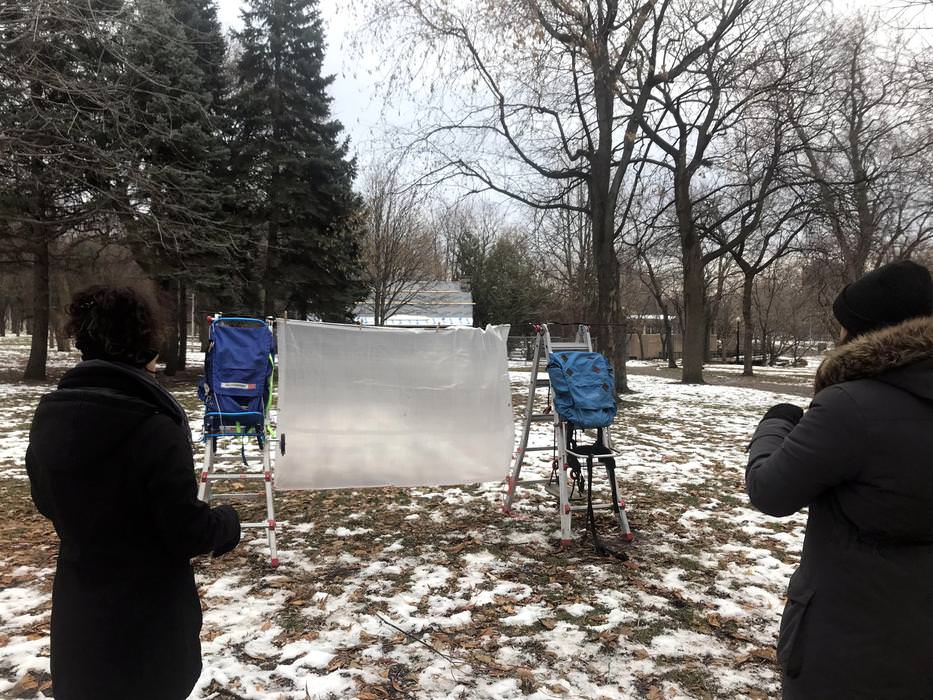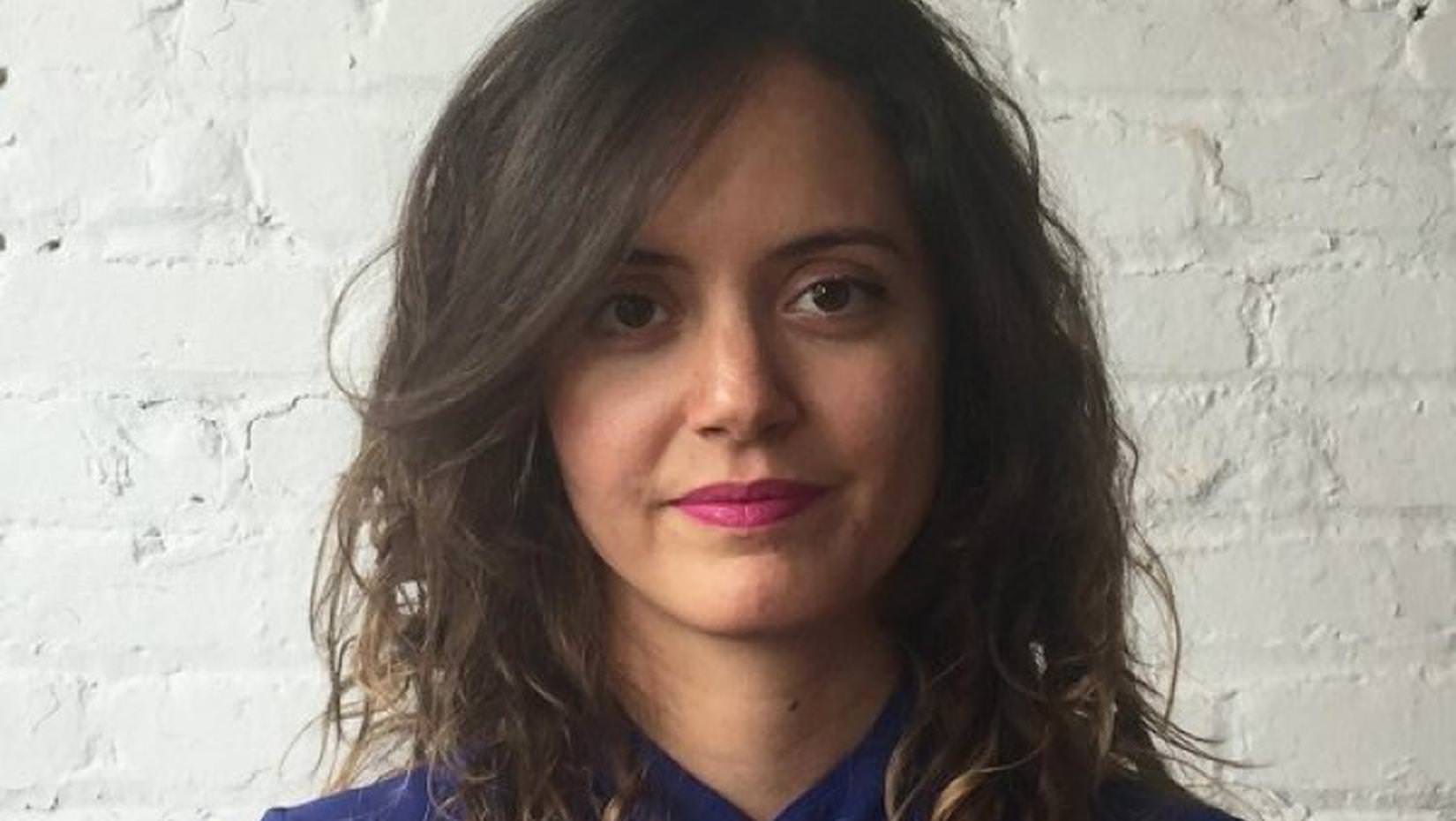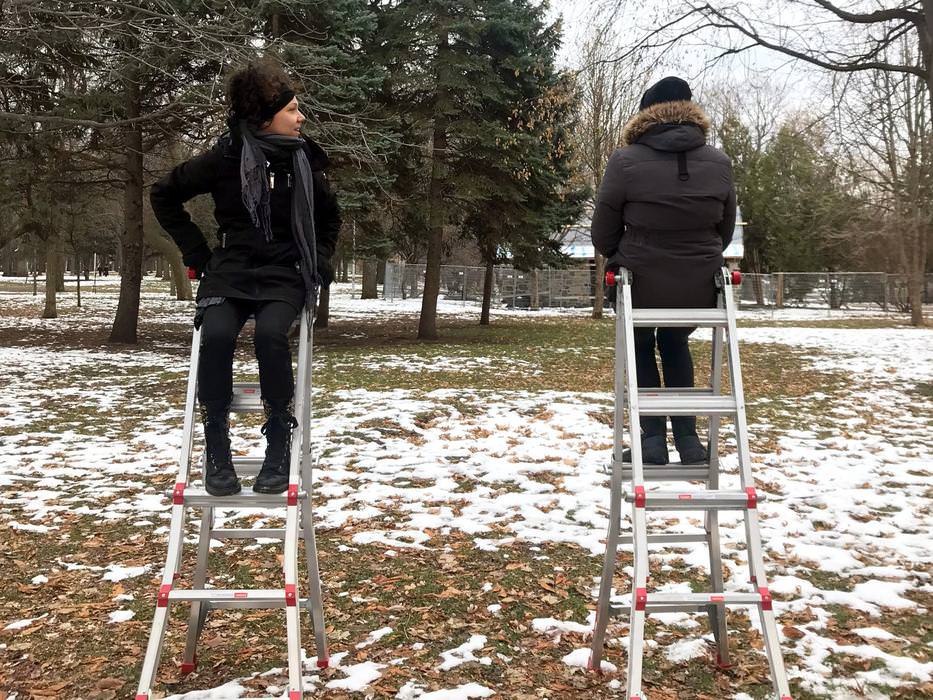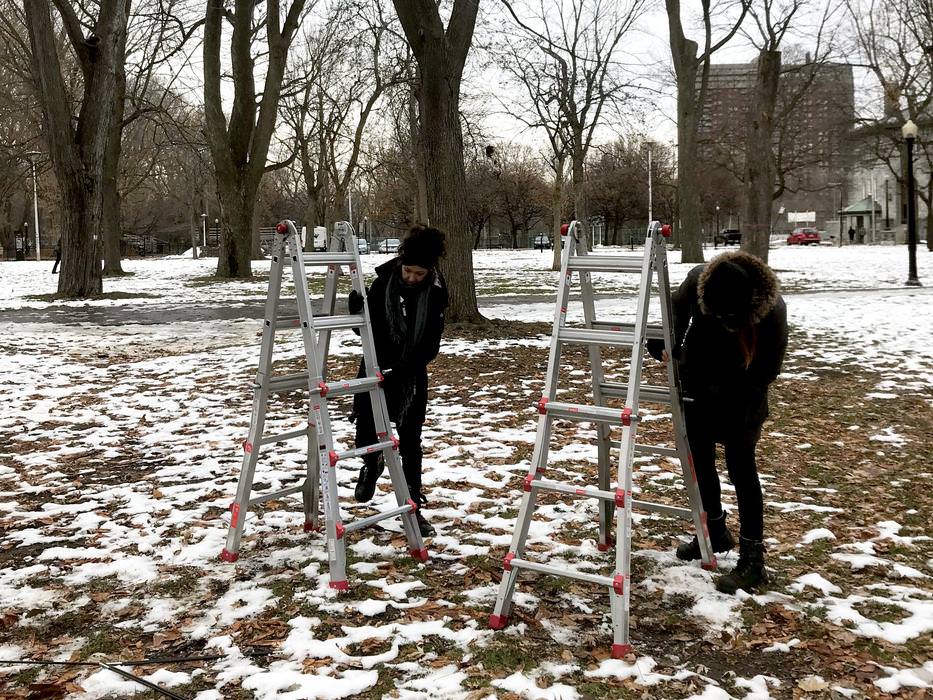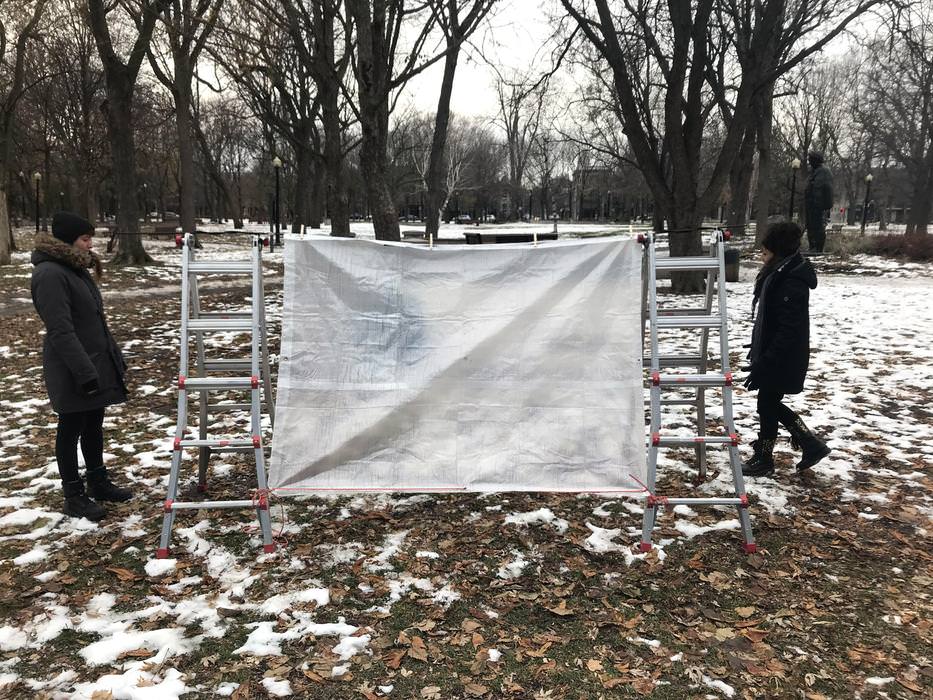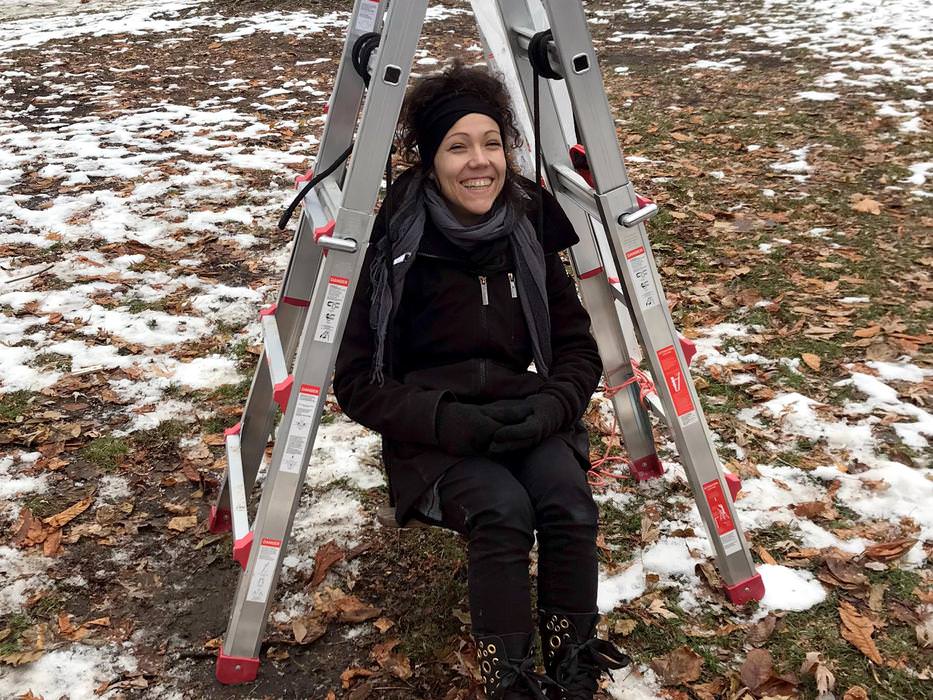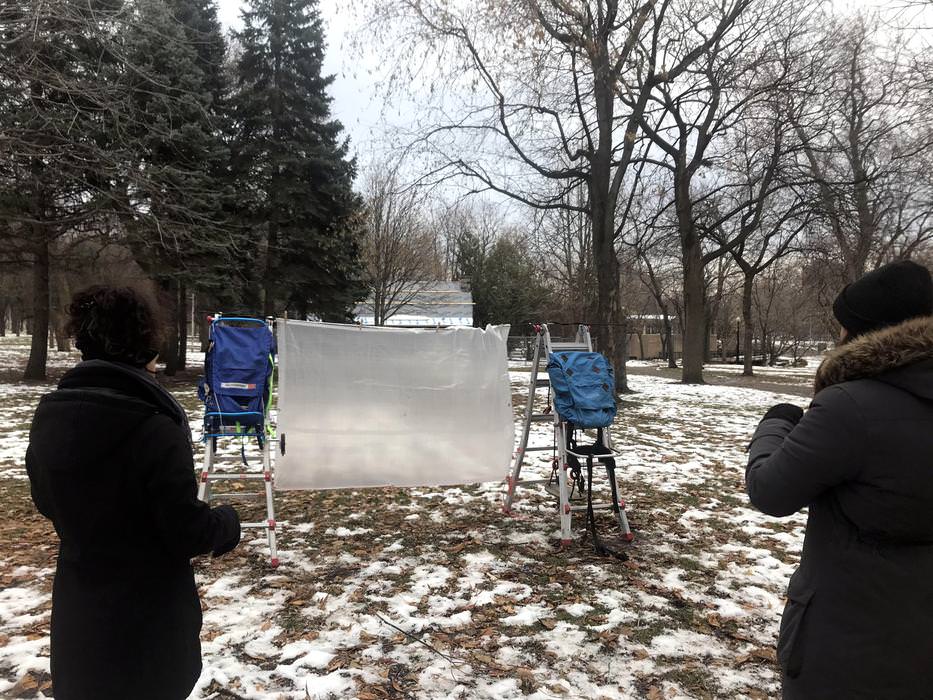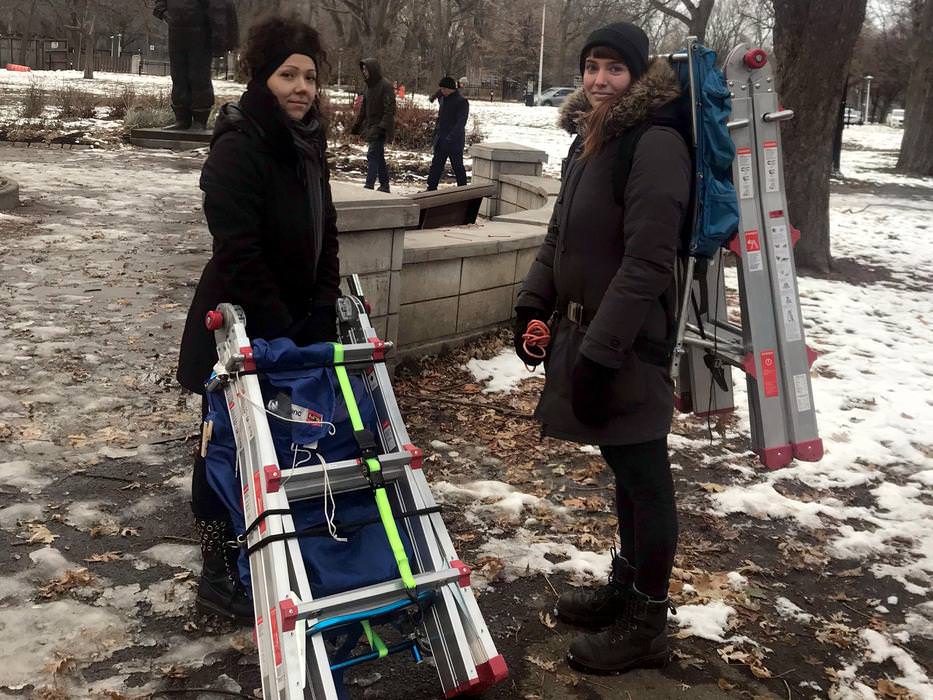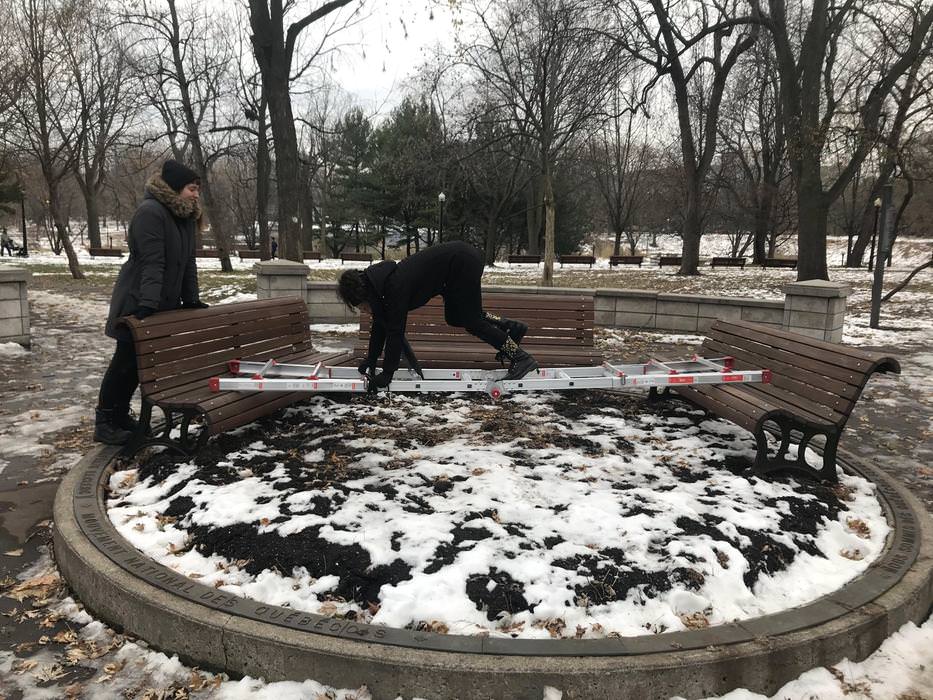Programming
Reacting to the limits of a duo, or what to do with a stepladder-in-a-rolling-backpack
A text on Nady Larchet and Stéphanie Nuckle
Renata Azevedo Moreira
Writer-in-Residence Renata Azevedo Moreira takes a fresh look at the work of artist duos formed for the Duology programming year.
Reacting to the limits of a duo, or what to do with a stepladder-in-a-rolling-backpack
Up and down, open and close.
What could a stepladder do, and undo?
What are the limits of what a backpack can carry?
What does it mean to work together through distance?
What happens when an object lives in the linear between a friend and an enemy?
What makes the weird duo of a roller backpack and stepladder one’s most ordinary companion?
Since the beginning of their pairing, Stéphanie wanted to rethink what a stepladder can be.
Nady promptly agreed, seeing an interesting way to experiment within a public space.
Separated between city and countryside, they provoke a real mise en abîme.
Two parallel yet diverse creations, each with its own particularities.
An inductive project that comes from experience.
Up and down, open and close.
In January 2019, as soon as they discovered they were one of Duologie’s pairs, Nady Larchet and Stéphanie Nuckle started working together. Their partnership, though, is not what we would regularly expect of a collaborative work. First of all, most of the work will be done from different locations, as Stéphanie lives in Montréal and Nady is based in Chaudières-Appalaches. Secondly, they seem to have given up the basic premise of collaboration; negotiation. Instead, they explore the possibilities that emerge when they adjust to each other’s ideas, like improvisers sharing the stage, by saying yes to pretty much every new suggestion the other one makes. By observing their interaction – witnessing the first time they brought their stepladders in a rolling travelling backpack for a test in a public space, the Parc La Fontaine – I understood their secret: they were open to each other’s inputs in a very cordial, yet enriching way.
Stephanie, who comes from a performance and public interventions background, suggested to start the duo’s creative work from a material that could be permeable enough to be transformed and yet rigid enough to be climbed on. Nady, on a complementary approach closer to media art and technology, thought about ways to integrate the sounds of their different environs into the work. This relationship put into practice one of the duo’s most important mutual ambitions: capturing the invisible that permanently surrounds us, most of the times unnoticed. Or, to put it another way: enabling the land to be heard.
Nady and Stéphanie’s project mostly comes from their genuine encounter, from their ability to be vulnerable and listen carefully to each other while seriously accepting the challenge of figuring out what they need to do together. Further decisions will be taken separately, each one trying to understand what their objects can do apart from each other, but the creative explorations that engendered the work were born from field assessments they undertook in each other’s attentive company.
For that purpose, the first thing they did as a duo was simply go for a walk together in the southwest area of Montréal. They had already met virtually and decided a stepladder would be the protagonist of their story, which would be perfect to look above and beyond things. It had to be easy to transport, so adding wheels also seemed natural. However, their territorial exploration had them look down and find abandoned treasures in an empty alley: drawers from an old piece of furniture filled with children’s photographs, hygiene masks and even a health insurance card. A backpack – why not – would be so useful to carry found items they would get to discover on their journeys. They also noticed that even though it was a rough, cold day, the objects succeeded in emerging out of the accumulated snow. This last component made them reflect about the relations weather and environment maintain with everything that exists, be it organic or not.
These preoccupations are represented in the solutions the duo find to absorb the problems that emerge from the use of technology. Within the idea of a more-than-human collaboration that would include their stepladder-in-rolling-backpacks, they also wanted to incorporate the decisive participation of the weather. So they agreed to include sound captors in both the pieces, each one being able to synthetize a specific sound that will vary according to the temperature, humidity and luminosity of the day. These memories will not be visual but sensorial, as a way to encapsulate what happened on each moment they took their non-human partner for a walk outside. In order to function, though, the apparatus will need sun light, as their batteries are solar powered.
Not being possible to capture the surrounding noises in the evening is only one of the several restrictions the duo will have to deal with. It is very interesting to see the way Nady and Stéphanie push the collaborative proposition of Duologie way beyond the human duo. They have carefully introduced a different partner to the art making, a piece of matter that actually matters equally as both of them do. Heavy weighted, difficult to pack, complicated to take outside when it rains or snows or even to take inside when looking for shelter from rain or snow, the two stepladder-in-rolling-backpacks have their own needs and constraints. They won’t go everywhere, and they need time to be set up and patience to be cared for. Their physical limitations can dictate what can and cannot be done, what should and should not be tried. The human duo will not work on their objects: they will work with them, navigating all the complexities and unexpected events immanent in any relationship. In summary, instead of duologies, they became quadrologies.
This lack of control can be frightening, as the questions that emerge from this project will only find possible answers from within the own process of experimenting. Ultimately, it is the objects themselves and the relations that come from their being in the world that will bring light into the searched answers. Questioning recognized functionalities and limits by adding up other functions and boundaries is a complex metalinguistic exercise proposed by the artists. They see the object and ask themselves: what else can this paradigm create? What else can it do? Can the ladder be used to cross a river, or to pick up apples? Can both of them be put together to hold a white piece of cloth that will serve as a screen for a mobile movie theater? Can they hold a swing where we can sit on and relax? How do these relations change through seasons?
What Nady and Stéphanie are doing together comes from a mindful improvisational process that is attuned to the multiple variations that can happen every time the event is performed. They know they cannot predict everything, and they are open to dealing with every surprise as they come. They not only make their artworks, but also listen to them and recognize that some questions are still to appear. For instance, the role the public plays as they are confronted with such peculiar combinations of artifacts. for instance, the role played by the public when they will be confronted with such peculiar combination of artifacts. What they know for now is what they have in their hands: infinite possibilities to put multiple elements together and see what these materials can do once they’re taken outside. All of the rest lies in the potentials of the work, still waiting calmly to be discovered, unpacked, one step at a time.
